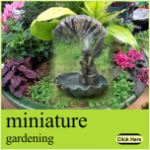One of the popular and unique ways of gardening includes hydroponic gardening where plants are grown without any use of soil. They are grown in a mineral nutrient solution with some medium like sand, gravel, coconut fiber, perlite and so on. With its many benefits like easy and speed uptake of nutrients, faster growth and others, it is being popularly practiced. However, it is also associated with some issues which should be kept in mind when planning to grow plants by hydroponic gardening.
mineral nutrient solution with some medium like sand, gravel, coconut fiber, perlite and so on. With its many benefits like easy and speed uptake of nutrients, faster growth and others, it is being popularly practiced. However, it is also associated with some issues which should be kept in mind when planning to grow plants by hydroponic gardening.
Certain conditions like fertilizers and presence of high humidity creates an environment which promotes the growth of fungus and algae. In order to avoid the algal growth, the system should limit the exposure of the nutrient solution to light wherever possible. A dark or opaque material should, therefore, be used to make the nutrient reservoir. Ensure that it has a lid. However, holes in the lid should not be bigger than the water return pipe and the hydroponic pump hose.
 The frequency of addition of the nutrient solution is another issue with hydroponic systems. Too much or too little amount will kill the plants. It is necessary to add the solution everyday. With airflow, the solution tend to evaporate quickly, thereby, increasing the need to add more solution.
The frequency of addition of the nutrient solution is another issue with hydroponic systems. Too much or too little amount will kill the plants. It is necessary to add the solution everyday. With airflow, the solution tend to evaporate quickly, thereby, increasing the need to add more solution.
The other common problem in hydroponic gardening is aeration. When plastic tubes with aeration or containers with holes cut in for the plants are
used, the root system of the plants which gets expanded may clog the system. With this, the proper amount of airflow is disturbed and the roots get rot resulting in the death of the plants. Hence, it is preferred to add a pump to the system that forces air through or vent the bottoms of the containers and place them up on platforms. The expense of cleaning or reusing a system is also the other common issue. So, when you are planning to practice hydroponic gardening, keep these issues in mind and find proper solutions for effective growth of plants.
